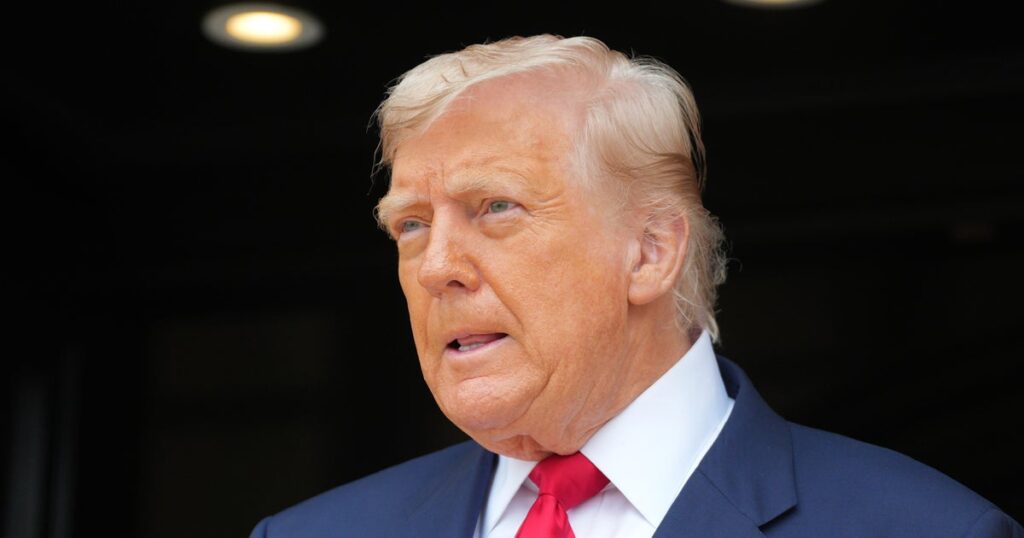President Trump announced Wednesday he has struck a trade deal with South Korea, imposing a 15% tariff on goods from the country.
Mr. Trump wrote on Truth Social that South Korean goods will face a 15% tariff — lower than the 25% he threatened earlier this month — while U.S. imports to South Korea will not face tariffs. He said South Korea will be “OPEN TO TRADE” and will accept U.S. automobiles.
South Korea appears to be the latest key U.S. trading partner to reach an agreement with the Trump administration, ahead of a Friday deadline when Mr. Trump says he’ll impose hefty tariffs on dozens of countries.
The South Korean government has not publicly confirmed the deal.
In addition to the 15% tariff, Mr. Trump said South Korea agreed to “give to the United States $350 Billion Dollars for Investments owned and controlled by the United States, and selected by myself.” South Korea will also buy $100 million dollars’ worth of liquified natural gas or other energy products, and will “invest a large sum of money for their investment purposes,” the president said.
South Korea was the U.S.’s sixth-largest trading partner last year, not including multi-country blocs like the European Union, according to Census Bureau data. The U.S. imported $131.5 billion worth of South Korean goods, and South Korea bought $65.5 billion in American goods.
The president announced a deal with Japan last week and a deal with the 27-nation EU on Sunday. Deals are still outstanding with the U.S.’s three largest single trading partners: Canada, Mexico and China.
Trump strikes trade deals as tariff threats loom
Mr. Trump has spent much of his first six months in office pressing U.S. trading partners to agree to trade deals — and floating large-scale tariffs if they don’t correct what he views as imbalanced trading practices.
Most countries, including South Korea, have faced 10% tariffs since April, when Mr. Trump delayed a set of higher “reciprocal tariffs” for 90 days to buy his administration time to negotiate. Then this month, the president sent letters to South Korea and around two dozen other trading partners telling them to expect higher tariffs starting Friday, Aug. 1, unless deals are reached.
Mr. Trump has stood behind that deadline, writing on Wednesday: “THE AUGUST FIRST DEADLINE IS THE AUGUST FIRST DEADLINE — IT STANDS STRONG, AND WILL NOT BE EXTENDED.”
Trading partners like Indonesia, the Philippines, the EU and Japan have struck trade deals before then — generally agreeing to tariffs that are lower than the ones threatened by Mr. Trump but higher than the 10% baseline.
Meanwhile, negotiations with China, Canada and Mexico remain ongoing. Higher tariffs on Chinese goods are set to take effect on Aug. 12 unless the two countries strike a deal, though an extension is possible, U.S. officials have said.
All told, the president said this week he expects that most imports to the U.S. will face a baseline tariff of 15% to 20%. By comparison, the average tariff rate on U.S. imports in 2023 was around 2.5%, according to figures from the Yale Budget Lab, a non-partisan policy research center.
Mr. Trump has argued his tariff strategy is necessary to correct what he views as unfair trading practices and revive American manufacturing. But many economists warn tariffs can lead to higher inflation and more sluggish economic growth, and some of the president’s early trade moves rattled financial markets.
Consumer prices have been relatively stable so far this year — though above the Federal Reserve’s 2%-per-year target. Some economists say that’s partly because companies have taken steps to prevent short-term shocks from tariffs.
https://www.cbsnews.com/news/trump-south-korea-tariff-deal/


